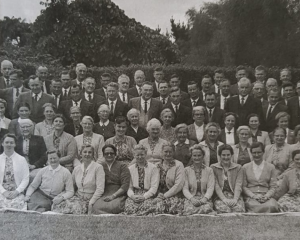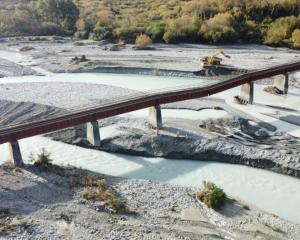Scientists hope a proposal to drill the seabed off New Zealand's east coast will unlock the secrets behind earthquakes, such as one which wreaked havoc in Japan six years ago.
Latest research into Japan's devastating 2008 Tohoku quake has underlined the importance of the plan to drill into the sea floor off Gisborne, to find out more about the mechanics of slow slip earthquakes.
New Zealand and overseas scientists working on the Hikurangi drilling plan met in San Francisco just before Christmas and hope to secure funding later this year.
Japanese scientists have found the magnitude 9.0 quakewhich unleashed the Fukushima tsunami was the result of a stealthy nine-year build-up of pressure in the offshore plate boundary.
Research has shown part of the offshore fault was being quietly crushed and twisted for nearly a decade, and the stress of the deformation finally triggered the earthquake.
The long silent quake, or slow slip event (SSE) was similar to those occurring off Gisborne's coast and elsewhere in New Zealand.
These SSEs are related to the subduction zone associated with the Hikurangi Trough, where crustal plates collide and the Pacific plate dives or subducts under the Australasian plate and New Zealand.
It is only in the past few years that SSEs have been detected and are now the subject of intense study.
University of Tokyo scientist Kazuki Koketsu said the slow-slip stress triggered the quake and tsunami which took 18,000 lives. But he cautioned it had not yet been proven that slow slip events always occur prior to a great subduction earthquake.
This is one of the reasons an international team of scientists, including members of New Zealand's GNS Science, led by Dr Laura Wallace, are planning to drill into the subduction zone off Gisborne, where several slow slip events have been detected over the past few years.
The latest was a five-week event over October-November.
Just before Christmas, the Hikurangi team met for a workshop in San Francisco to discuss many aspects of the offshore drilling plan.
The plan calls for holes to be drilled from 300 to 400 metres and up to 1200 metres deep into the seafloor.
The workshop discussed a multidisciplinary approach to the project, to test temperature, pressure, movement and other factors, and to take core samples. Rock chemistry, friction and elecromagnetic forces are other areas of study.
The behaviour of fluid in the rock and its influence on slow-slip events and quakes is a major interest.
A specialised Japanese ocean drilling ship, the Chikyu, would be brought to Gisborne to do the work.
Because of the multimillion-dollar size of such projects, they are years in the planning and have to join a queue with other major proposals.
The board in charge of the Chikyu's drilling programme last year rated the Hikurangi proposal as "excellent".
The chairman of the GeoPRISMS (Geodynamic Processes at Rifting and Subjecting Margins) body which is behind the project, Dr Peter van Keken of the University of Michigan, says there are funding opportunities for the New Zealand projects through the International Ocean Discovery Programme (IODP), with proposal deadlines this July and July 2016.
At this stage the hope is to be able to undertake the drilling sometime in 2017.
By Roger Handford of the Gisborne Herald












